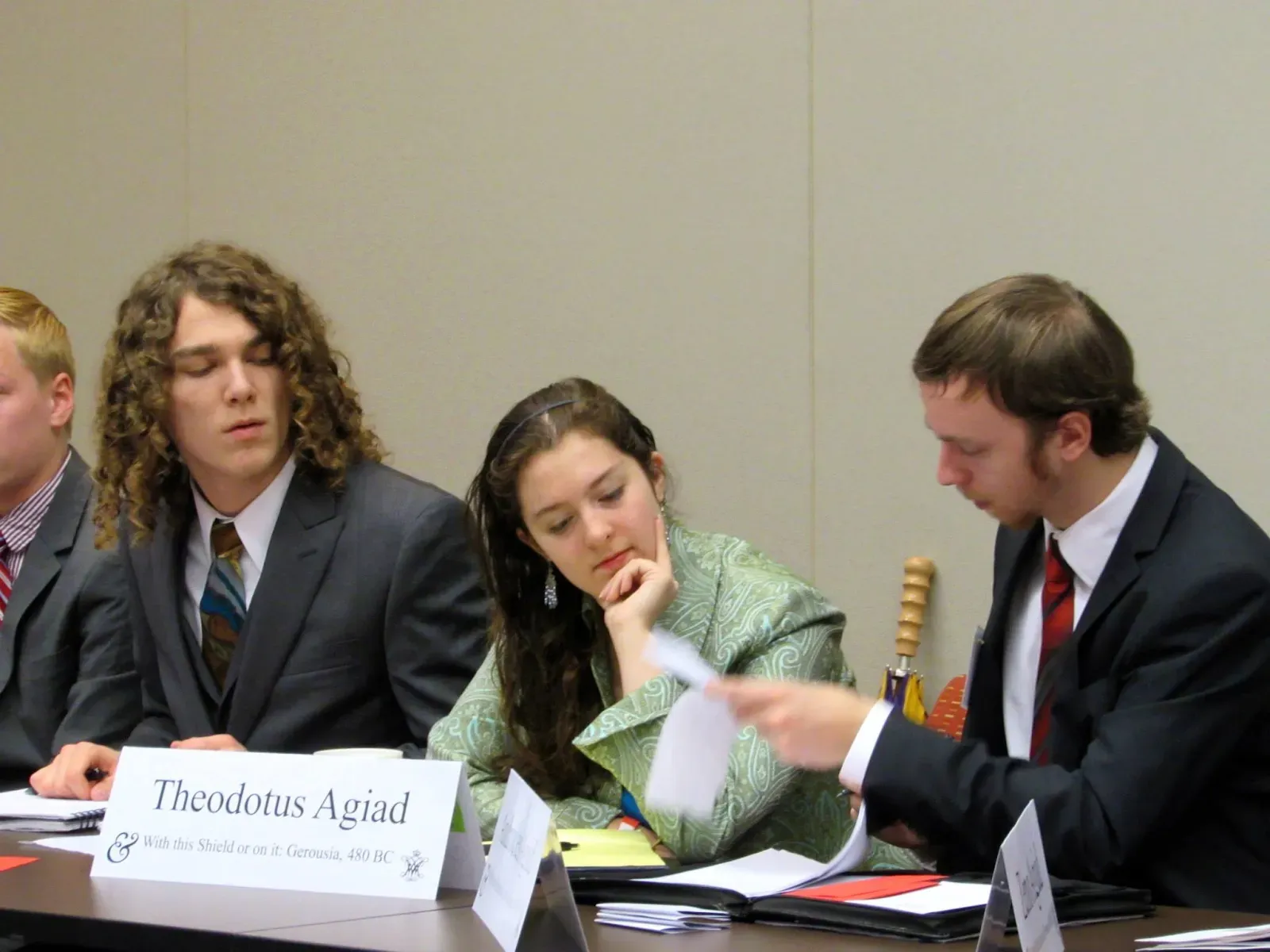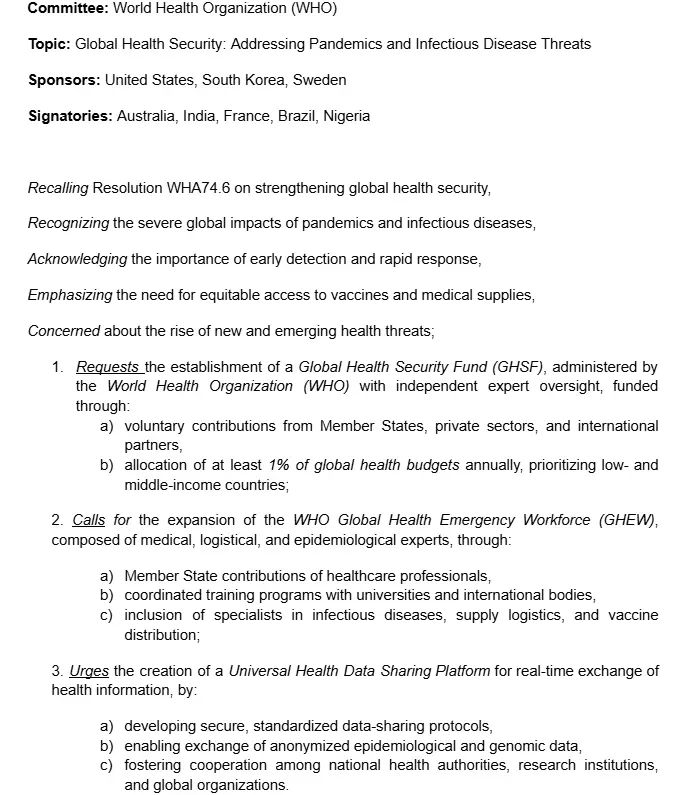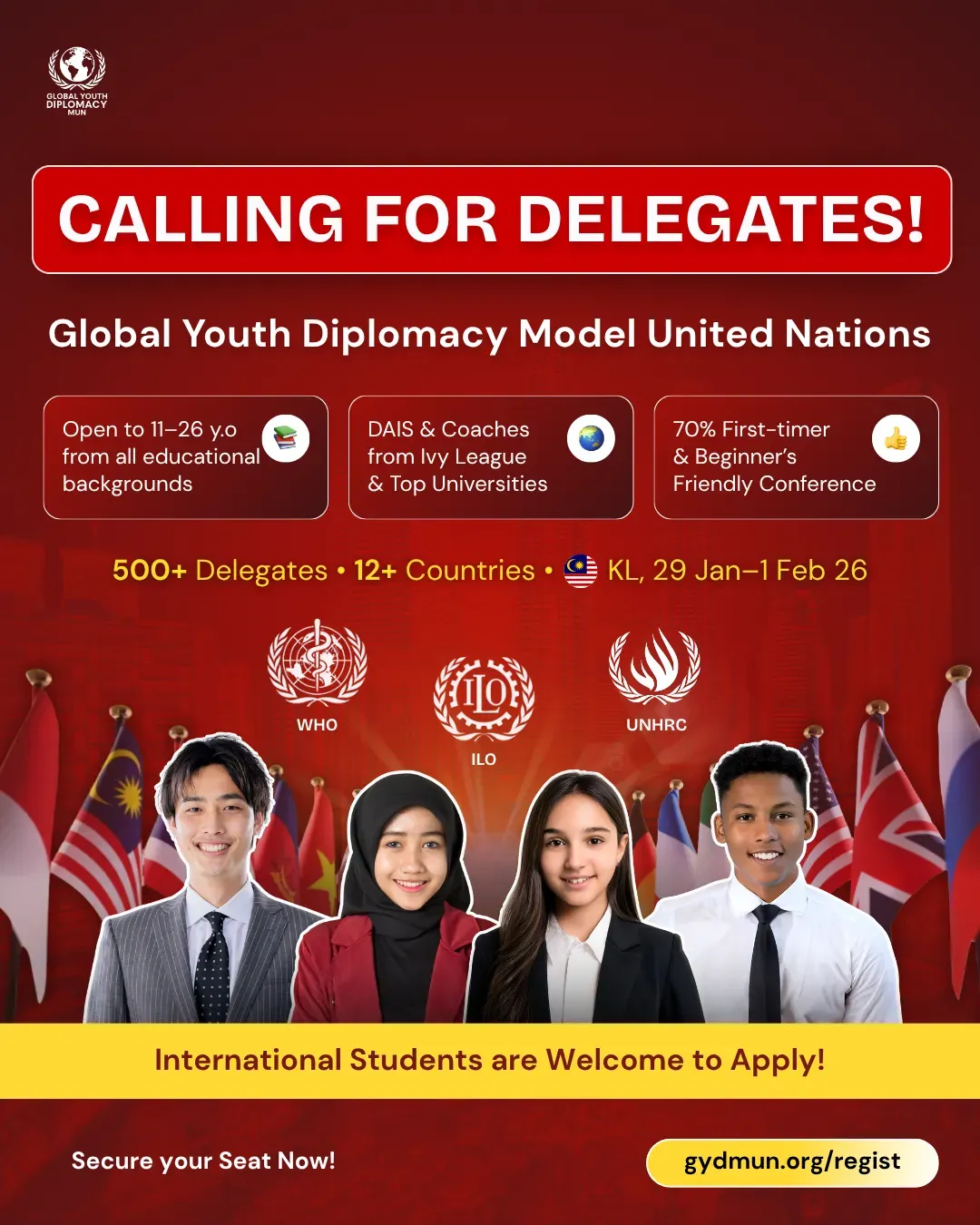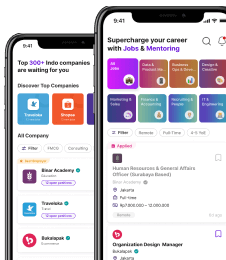During the unmoderated caucus in MUN, delegates often collaborate with their bloc members to create a working paper that outlines their proposed solutions.
If it’s your first time joining a conference, you might be wondering, what is a working paper in MUN?
It’s essentially a draft of ideas and recommendations meant to persuade other delegates and later develop into a formal resolution draft.
Let’s help you understand the proper format, learn how to write one, and look at some examples to get you started!
What is a Working Paper in MUN?

A working paper in Model United Nations (MUN) is an early draft that comes before the draft resolution.
It serves as a collection of ideas and potential solutions that delegates aim to later refine into a formal resolution.
Unlike a draft resolution, a working paper does not have to follow the official UN format. Its main purpose is to communicate ideas clearly rather than focus on structure or phrasing.
During unmoderated caucus, delegates use their working papers as tools for lobbying, negotiation, and collaboration. It’s better to focus on just two or three standout clauses rather than extending it to two or three pages.
Read More: 20+ MUN Phrases You Need to Know as a Delegate and Chair
Difference between Working Paper, Position Paper, and Draft Resolution
These two also differ from a position paper. Let’s take a closer look at their differences:
1. Working Paper
As we said before, a working paper is an early draft that comes before the draft resolution. It’s an informal document that compiles ideas discussed by delegates during committee sessions.
- Goal: To collect and organize ideas for discussion and negotiation.
- When it’s created: During unmoderated caucus sessions, when delegates collaborate freely.
- Format: It does not need to follow the official UN resolution format—clarity and collaboration are the priorities.
- Purpose in debate: Helps delegates persuade others and build consensus around shared ideas.
2. Draft Resolution
A draft resolution is the formal and refined version of a working paper. It contains finalized ideas that have been reviewed and approved by the dais.
- Goal: To formally present agreed-upon solutions for voting.
- When it’s created: After delegates or blocs reach a consensus on shared proposals.
- Format: Must follow the official UN resolution structure.
- Purpose in debate: Serves as the official document debated, amended, and voted upon by the committee.
But, what is the difference between a draft resolution and a working paper? The difference between a working paper and a draft resolution lies in their level of formality.
A working paper is a collection of ideas that will later be refined into a formal resolution, whereas a draft resolution contains finalized and approved proposals that have been reviewed by the dais.
3. Position Paper
A position paper is a short written statement prepared before the conference. It outlines a country’s stance, priorities, and possible solutions regarding the topics on the agenda.
- Goal: To express the delegate’s national perspective and demonstrate prior research.
- When it’s created: Before the MUN conference begins.
- Format: Usually one page per topic, explaining background, national position, and proposed actions.
- Purpose in debate: Acts as the delegate’s foundation for arguments and negotiation strategies.
So, what is the difference between position paper and working paper in MUN?
A position paper is an individual paper written by a delegate before the conference, while a working paper is a collaborative document written during the conference.
Read More: How to Write a Winning MUN Position Paper + Sample (Complete Guide)
Working Paper Format
Once a working paper is approved by the dais, it officially becomes a draft resolution. Before that stage, the format is usually concise and does not have to follow the strict UN resolution format. To make your working paper organized, you can follow this general format:
1. Header
The header is the first section of your working paper and provides essential information at the top of the document. The information should contain:
- Committee: The name of your committee.
- Topic: The agenda being discussed.
- Sponsors: Countries that helped write and support the paper.
- Signatories: Countries that want the paper to be discussed, not necessarily those who agree with it.
2. Preambulatory Clauses
Preambulatory clauses are the opening sections of your working paper that explain the background and reasons behind the issue. They provide context and show why the topic requires attention.
Here’s the key to remember:
- Each clause starts with an italicized introductory phrase (e.g., Recognizing, Recalling, Acknowledging).
- Each clause ends with a comma, except the final one, which ends with a semicolon.
3. Operative Clauses
Operative clauses are the action-oriented sections of your working paper. They outline the solutions that your bloc proposes to address the issue.
Each clause represents a specific step that the committee can take. The clearer and more specific your clauses are, the stronger your paper will be.
- Each clause begins with an underlined action verb (e.g., Encourages, Recommends, Calls upon).
- The last operative clause ends with a period.
- Clear and concise wording makes it easier for others to understand and support your paper.
Example of Working Paper in MUN
To help you understand better, check out these MUN working paper examples that you can copy or download:
1. Simple MUN Working Paper Sample
This simple example follows the general format of a MUN working paper. You can copy it directly.
- Committee: United Nations High Commissioner for Refugees (UNHCR)
- Topic: Addressing the Global Refugee Crisis
- Sponsors: France, Germany, Japan
- Signatories: Canada, Kenya, Brazil, Indonesia
Recalling the 1951 Convention Relating to the Status of Refugees and its 1967 Protocol,
Recognizing the growing number of refugees worldwide, which reached over 35 million in 2024 according to UNHCR data,
Acknowledging the severe strain placed on host countries with limited economic capacity,
Concerned that refugee children account for 40% of the global displaced population, facing limited access to education,
Emphasizing the need for equitable responsibility-sharing among Member States;
- Encourages Member States to establish a Regional Refugee Support Fund (RRSF) to provide financial aid to host countries based on GDP and refugee population ratios;
- Calls for increased collaboration with UNHCR, NGOs, and local governments to improve refugee data collection using digital identification systems;
- Recommends the development of mobile education centers in major refugee camps to ensure access to primary education for displaced children;
- Proposes partnerships with private sectors to create job training programs for refugees, focusing on digital literacy and local labor needs;
- Invites donor countries to allocate at least 0.05% of their annual GDP to support long-term refugee resettlement programs.
2. MUN Working Paper Sample PDF
This sample is in PDF format, and you download or use its structure to create your own working paper.

How to Write a Working Paper for MUN
Usually, an MUN working paper is about two pages long, but it can be longer or shorter depending on how detailed your bloc’s ideas are.
If this is your first time writing one, follow this step-by-step guide on how to write a working paper:
1. Start with the Header
Begin your working paper with a clear and simple header. This section helps readers and the chair quickly understand the context of your document.
The header should include the committee, topic, sponsors, and signatories.
Example:
Committee: United Nations Human Rights Council (UNHRC)
Topic: Combating the Rise of Online Hate Speech
Sponsors: France, Germany, Canada
Signatories: Japan, Brazil, Indonesia, South Africa
2. Write the Preambulatory Clauses
Start with an italicized phrase such as Recalling, Acknowledging, or Recognizing. Each clause ends with a comma, except for the final clause, which ends with a semicolon.
Keep each clause short and focused on one idea. If possible, add charts, maps, or brief data points to illustrate background context (e.g., refugee statistics or affected regions).
Example:
- Recalling the 1951 Refugee Convention and the 1967 Protocol as key international instruments protecting refugee rights,
- Acknowledging that over 36 million people were displaced across borders in 2024 according to UNHCR data,
- Recognizing the disproportionate impact of conflict and climate change on displacement in regions such as Sub-Saharan Africa and Southeast Asia;
3. Develop the Operative Clauses
Next, continue writing the operative clauses. Each clause begins with an underlined action verb and presents a realistic, measurable action.
Avoid vague terms like “improve” or “strengthen” without explaining how. Instead, describe specific steps and clear outcomes.
Quick Tips:
- Highlight key terms to help other delegates grasp your main ideas during lobbying.
- Present alternative options, such as developing a solution internally through UN agencies or outsourcing to independent experts.
Example:
- Urges member states to establish a Regional Refugee Data Platform under the supervision of UNHCR to track annual displacement figures and trends;
- Calls upon UNDP and local NGOs to implement community-based resettlement programs aiming to integrate at least 10,000 refugees annually by 2027;
- Suggests that member states may either:
- collaborate with the UNHCR Innovation Service to design digital registration systems internally, or
- contract independent technology experts to develop the same systems under UN supervision;
4. Collaborate and Refine
Working papers are collaborative documents written by multiple delegates. Some may share your country’s goals, while others may have slightly different priorities.
The process involves negotiation, compromise, and creative teamwork.
Be open to feedback and ready to adjust your clauses if it helps your bloc reach a wider consensus.
Sometimes, combining preambulatory and operative clauses into a “problem–solution” format can make your ideas clearer when presenting them to others.
5. Finalize and Present Your Paper
Before submitting your working paper, ensure it is clear, concise, and well-organized. The goal is not to sound overly formal but to communicate your ideas effectively.
Checklist:
- The structure follows a logical flow, background > problem > solution.
- Each clause is grammatically correct and properly punctuated.
- Visuals (if used) are relevant.
- The paper is ideally 1–2 pages long.
Once finalized, use your working paper to lobby and persuade others. Bring printed copies, highlight key points, and practice summarizing your main proposals in a few sentences.
Want to Be Part of Global Solutions? Join GYDMUN 2026 in Malaysia!
If you want to collaborate and contribute to solutions for global issues, Global Youth Diplomacy MUN 2026 is the perfect platform.

This Model United Nations conference is now open for registration and will take place from 29 January–1 February 2026 in Kuala Lumpur, Malaysia.
Everything is provided for participants, including hotel accommodation, meals, a liaison officer, certificates, and even a one-day city tour.
Join over 500 delegates from around the world and choose your committee from major UN bodies such as WHO, UNHCR, and ILO.
Don’t miss this opportunity to engage, negotiate, and shape ideas that can make a difference globally.
Learn more about GYDMUN:
- Guidebook: GYDMUN Guidebook
- Video Trailer: GYDMUN 2026
- Official Website: gydmun.org
Spots are filling fast, secure your seat now!

References:
